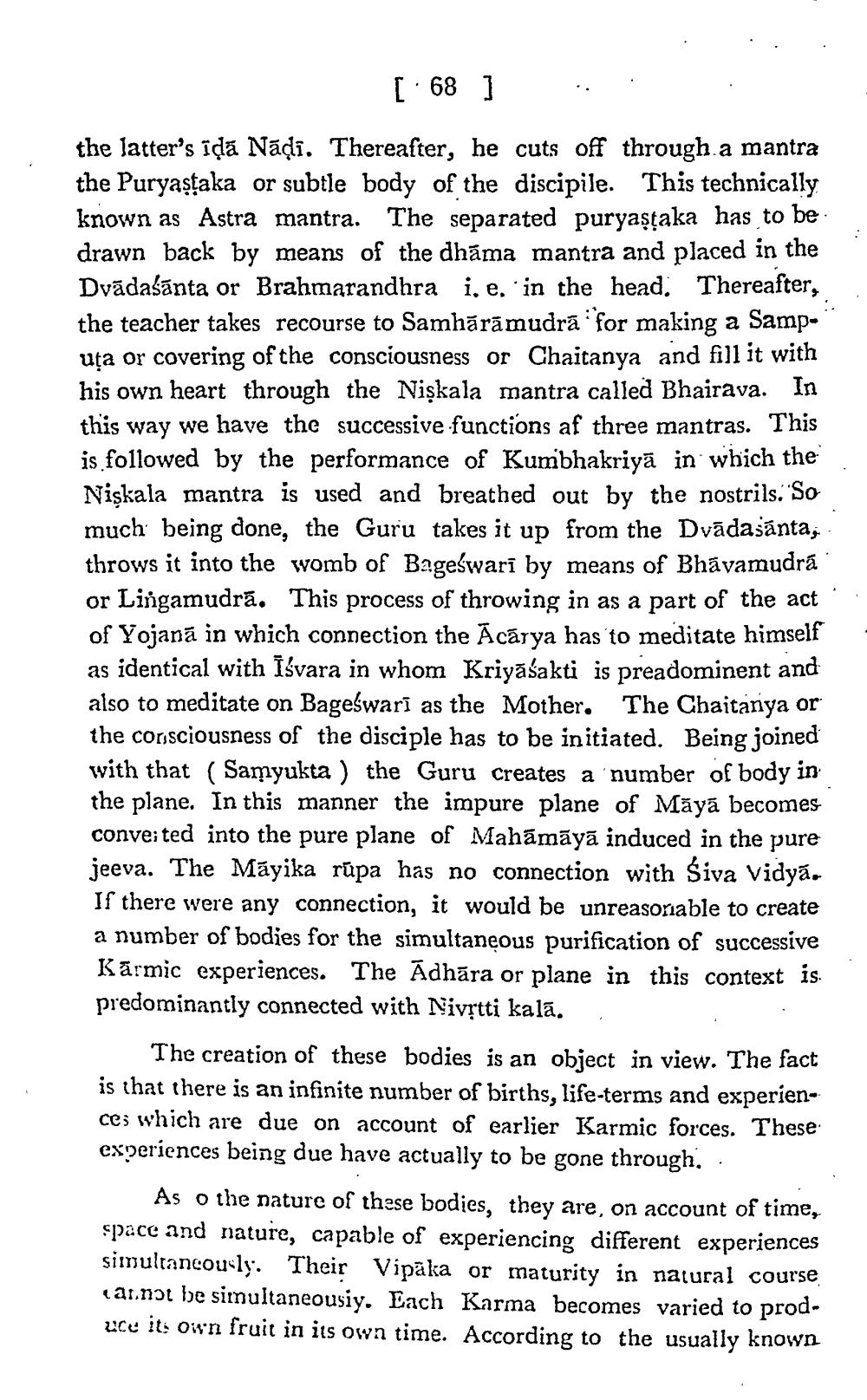________________
[ 68 ]
the latter's iḍā Nāḍī. Thereafter, he cuts off through a mantra the Puryaṣṭaka or subtle body of the discipile. This technically known as Astra mantra. The separated puryaṣṭaka has to be drawn back by means of the dhama mantra and placed in the Dvādaśānta or Brahmarandhra i, e. in the head. Thereafter, the teacher takes recourse to Samhārāmudra for making a Samputa or covering of the consciousness or Chaitanya and fill it with his own heart through the Nişkala mantra called Bhairava. In this way we have the successive functions af three mantras. This is followed by the performance of Kumbhakriyā in which the Niskala mantra is used and breathed out by the nostrils. So much being done, the Guru takes it up from the Dvādasānta, throws into the womb of Bageswari by means of Bhāvamudra
or Lingamudra. This process of throwing in as a part of the act of Yojana in which connection the Acarya has to meditate himself as identical with Isvara in whom Kriyāśakti is preadominent and also to meditate on Bageswari as the Mother. The Chaitanya or the consciousness of the disciple has to be initiated. Being joined with that (Samyukta) the Guru creates a number of body in the plane. In this manner the impure plane of Maya becomes converted into the pure plane of Mahāmāyā induced in the pure jeeva. The Mayika rūpa has no connection with Śiva Vidya. If there were any connection, it would be unreasonable to create a number of bodies for the simultaneous purification of successive Karmic experiences. The Adhāra or plane in this context is predominantly connected with Nivṛtti kalā.
The creation of these bodies is an object in view. The fact is that there is an infinite number of births, life-terms and experiences which are due on account of earlier Karmic forces. These experiences being due have actually to be gone through.
As o the nature of these bodies, they are, on account of time, space and nature, capable of experiencing different experiences simultaneously. Their Vipäka or maturity in natural course cannot be simultaneousiy. Each Karma becomes varied to produce its own fruit in its own time. According to the usually known
:




